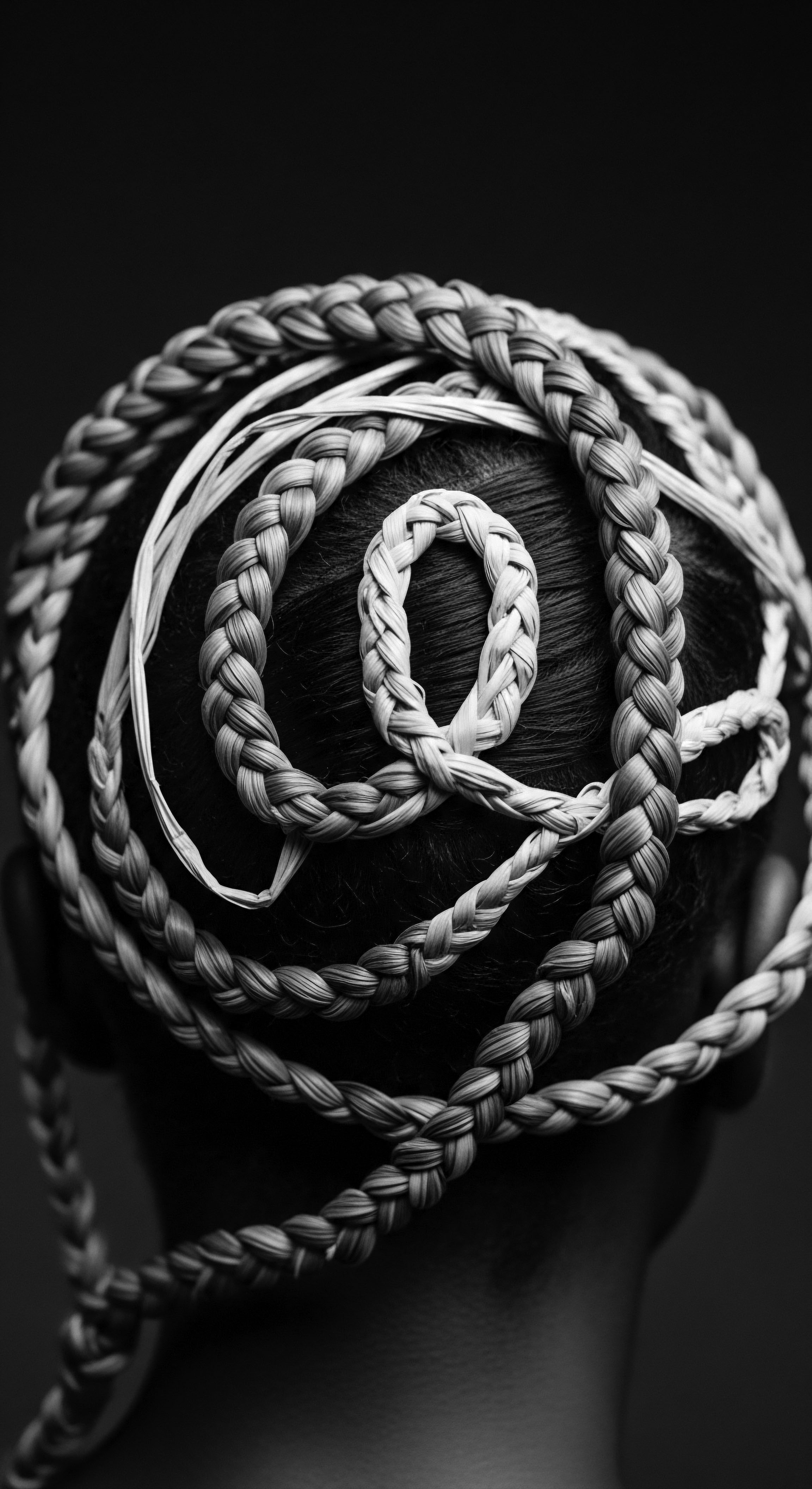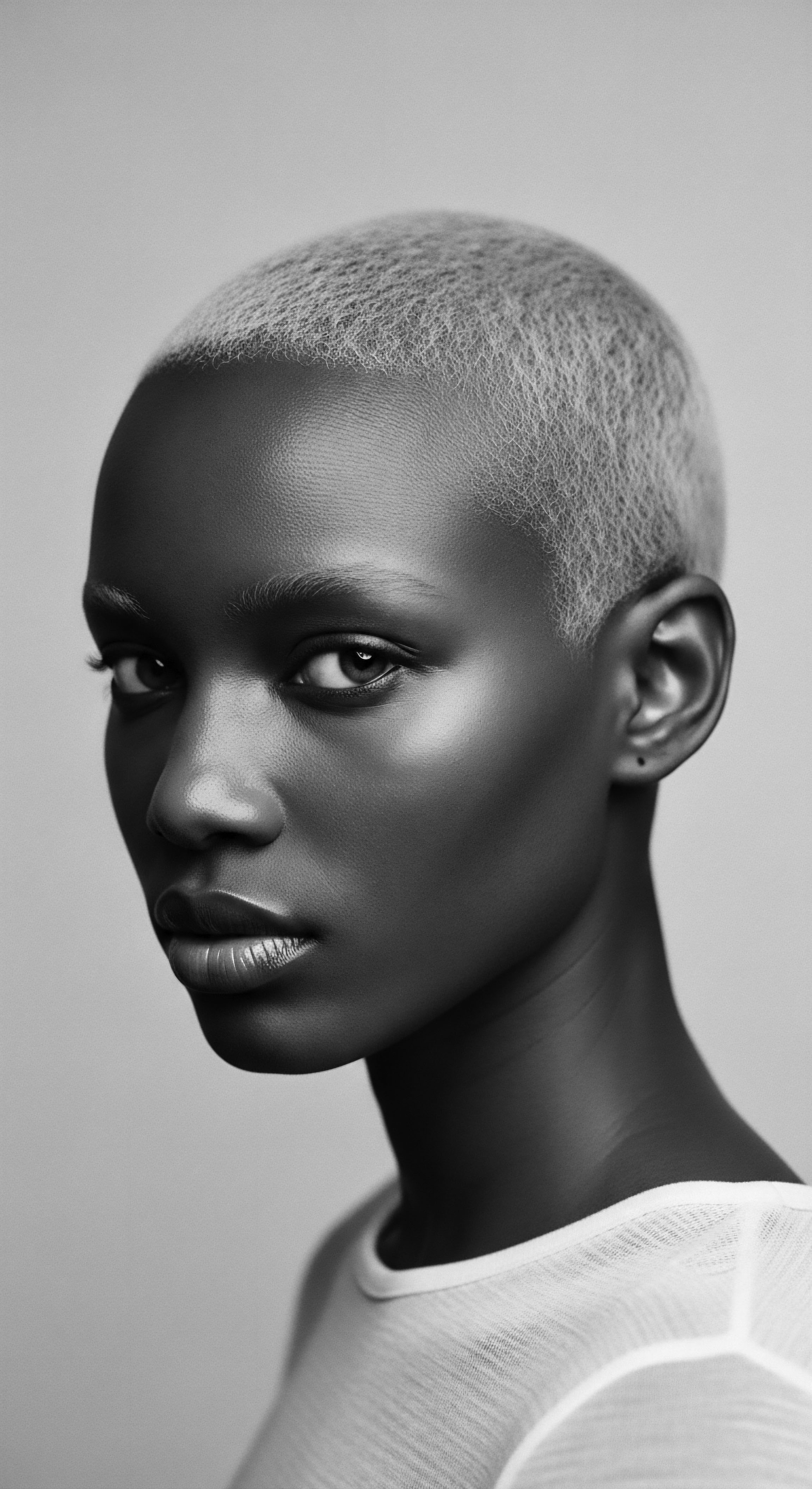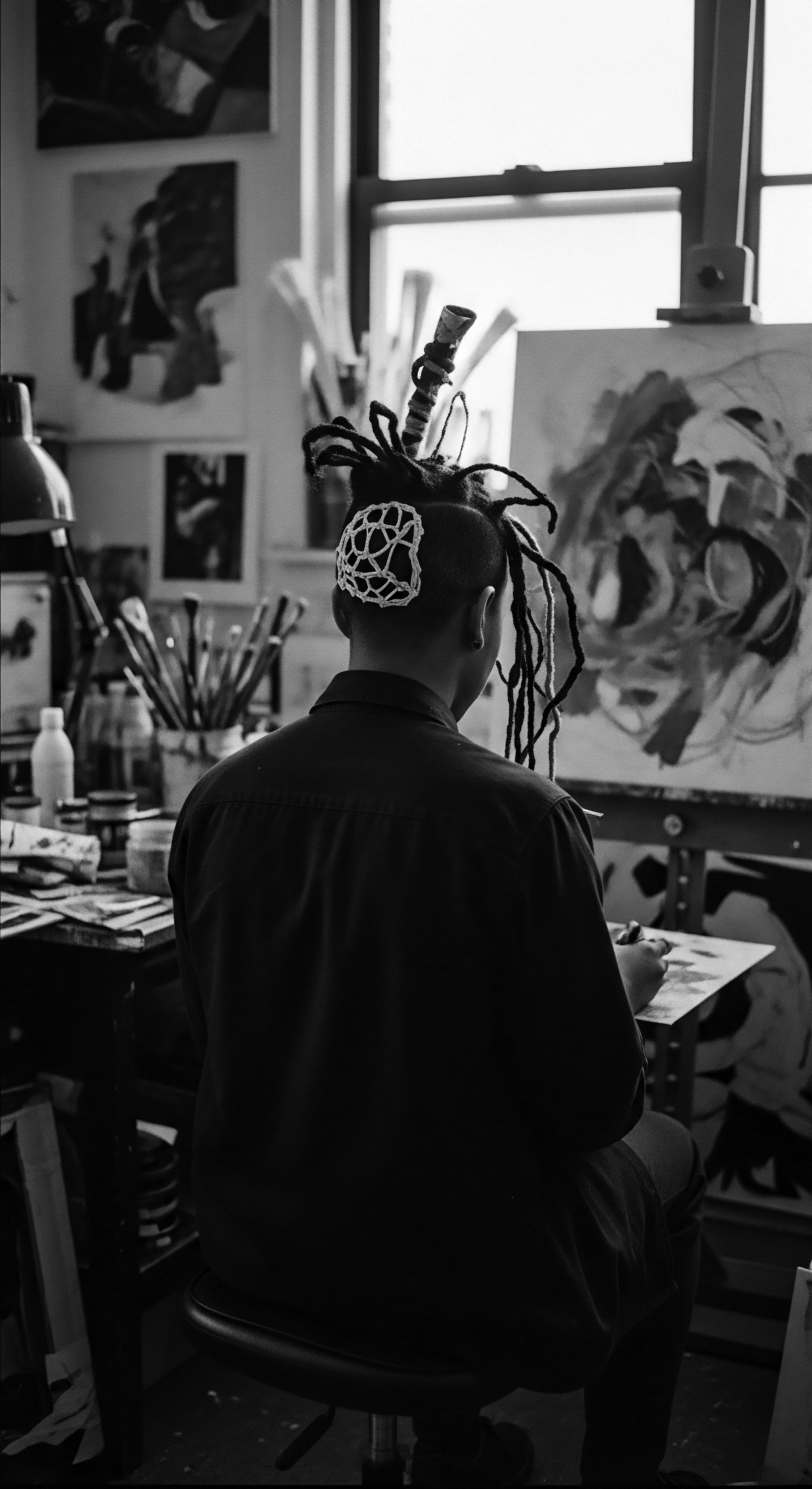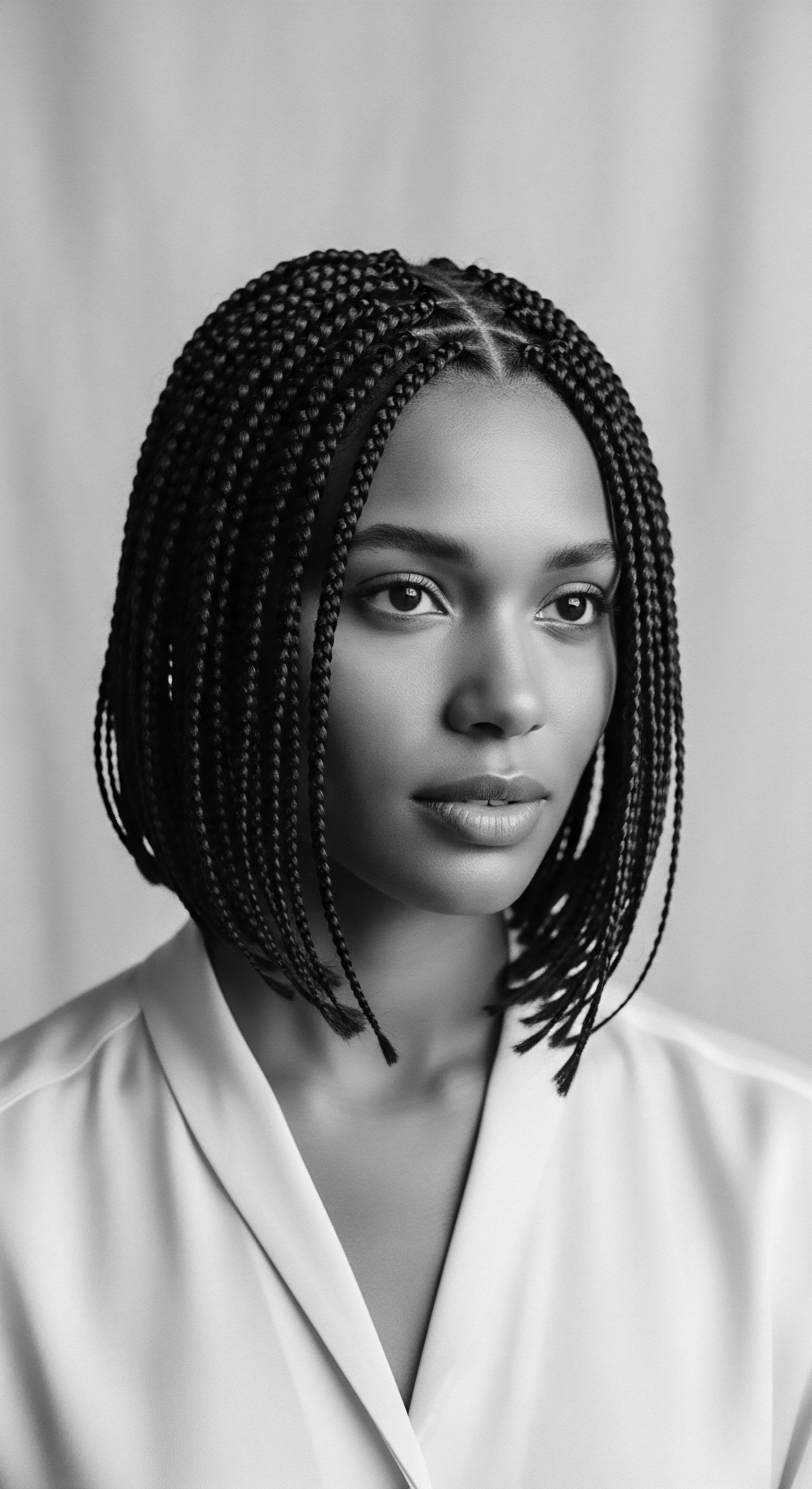
Fundamentals
The concept of Specialized Care, when observed through the ancestral lens of textured hair, represents a philosophy of attending to unique needs with reverence and precision. It signifies a dedicated approach, acknowledging that textured hair, encompassing the rich spectrum of Black and mixed-race experiences, possesses distinct biological structures, historical contexts, and cultural meanings that demand particular methods of nurturing. This care transcends surface-level aesthetics; it seeks to understand the very fiber of a strand from its origin and its journey through time.
In its most straightforward meaning, Specialized Care points to practices, products, and insights tailored to specific hair characteristics, especially those with inherent curl patterns, from gentle waves to tightly coiled textures. Its designation separates generalized approaches from those that recognize and respond to the unique needs of melanin-rich hair. It is an interpretation, a clarification that acknowledges the inadequacy of universal solutions when addressing a heritage of hair as diverse and individual as humanity itself.
Specialized Care honors the unique blueprint of textured hair, recognizing its distinctive needs stem from both its inherent structure and its storied heritage.

Echoes from the Source ❉ Understanding Textured Hair’s Biology
Our exploration of Specialized Care begins with the fundamental biology of textured hair, a science that, for too long, has been overlooked in mainstream beauty discourse. The hair follicle, the very root of each strand, forms a distinct, elliptical shape for textured hair, unlike the round follicles that produce straight hair. This elliptical structure compels the hair to curl as it grows, creating a spiral or zig-zag pattern. These curls, twists, and coils, while beautiful, create points of vulnerability where the hair shaft naturally bends.
- Elliptical Follicle Shape ❉ This fundamental difference dictates the curl pattern, impacting how moisture travels down the strand and how light reflects off the hair.
- Cuticle Layer Configuration ❉ The outer cuticle layers on textured hair often do not lie as flat as on straight hair, creating more opportunities for moisture loss and greater susceptibility to breakage.
- Density and Spring Factor ❉ Textured hair often appears denser due to its volume and possesses a unique “spring” that can make it seem shorter than its actual length when wet.
This elemental biology underpins the core of Specialized Care, explaining why products and methods designed for straight hair often fail to adequately nourish or protect curls and coils. An understanding of these differences provides the foundation for practices that truly serve textured hair, drawing from the wisdom that has long recognized these distinctions.

Ancient Practices as Specialized Care
Before modern laboratories isolated proteins or formulated complex emollients, ancestral communities practiced a profound form of Specialized Care, rooted in observations of nature and deep knowledge of botanical remedies. These traditions, often passed down through generations, understood the unique requirements of textured hair, addressing its tendency towards dryness, its need for gentle handling, and its symbolic significance.
For instance, in ancient Egyptian society, hair care was a reflection of health, beauty, and status. Both men and women used oils extracted from plants like castor, sesame, and moringa for nourishment, alongside henna for conditioning and strengthening. These practices were not random applications; they were specific responses to the environment and the hair’s needs, constituting a form of deliberate, Specialized Care. The meticulous rituals, employing ingredients sourced from their immediate surroundings, allowed for hair to thrive even in the desert climate.
Similarly, in various West African cultures, traditional methods involved rich butters and oils applied to the hair to seal in moisture and provide protection. Such traditional formulations illustrate an innate comprehension of the hair’s porous nature and its tendency to lose water.
| Ancestral Ingredient Shea Butter (West Africa) |
| Traditional Application / Significance Deep conditioning, scalp health, sun protection; often used in communal rituals. |
| Modern Scientific Link / Purpose in Specialized Care Rich in fatty acids and vitamins A and E, providing emollients for moisture retention and anti-inflammatory benefits for the scalp. |
| Ancestral Ingredient Coconut Oil (Various regions) |
| Traditional Application / Significance Moisture sealing, strengthening strands, detangling; a versatile agent. |
| Modern Scientific Link / Purpose in Specialized Care Penetrates the hair shaft to reduce protein loss, offering conditioning and barrier protection against environmental factors. |
| Ancestral Ingredient Baobab Oil (Africa) |
| Traditional Application / Significance Nourishment, elasticity, repair; derived from the revered "Tree of Life." |
| Modern Scientific Link / Purpose in Specialized Care Contains omega-3, -6, and -9 fatty acids, along with vitamins, aiding in hair strength, elasticity, and mitigating environmental stress. |
| Ancestral Ingredient Henna (North Africa, Middle East) |
| Traditional Application / Significance Natural dye, conditioning, strengthening. |
| Modern Scientific Link / Purpose in Specialized Care Binds to keratin in the hair, providing strength and a protective layer while also offering color. |
| Ancestral Ingredient Chebe Powder (Chad) |
| Traditional Application / Significance Used by Basara women for long, healthy hair; involves a multi-step oiling and powdering ritual. |
| Modern Scientific Link / Purpose in Specialized Care Composed of local herbs, believed to strengthen the hair shaft, reducing breakage and promoting length retention. |
| Ancestral Ingredient These ancestral practices and ingredients form the bedrock of Specialized Care, affirming a continuous line of deep understanding for textured hair's well-being. |

Intermediate
The definition of Specialized Care expands beyond rudimentary biological understanding to encompass the adaptive strategies and community wisdom that have preserved textured hair heritage across millennia. It involves a nuanced recognition of historical influences, cultural resilience, and the intergenerational transmission of knowledge that shapes current approaches to hair wellness. This understanding acknowledges that hair care is seldom a solitary act. It often carries layers of social, spiritual, and personal meaning.

The Tender Thread ❉ Living Traditions and Community Care
Hair care in many ancestral African societies was a communal activity, a tender thread weaving individuals into the larger fabric of their community. These collective practices, far from being mere grooming routines, served as significant social opportunities for bonding and the exchange of wisdom. In Yorùbá culture, for example, the intricate art of hair braiding and styling was often reserved for close relatives, fostering deep connections and transmitting cultural values. This shared experience established a foundation of Specialized Care where techniques were perfected and passed down with deliberate intention, honoring the sacredness of the head and its hair.
Within Black communities, the ritual of hair care has long been a conduit for intergenerational wisdom and communal solace.
In pre-colonial African societies, hairstyles communicated a vast array of information ❉ tribal identity, marital status, age, wealth, and social rank. The meticulous styling of hair was a visual language, a living record of a person’s life journey and communal belonging. For instance, the Himba people of Namibia traditionally display elaborate hairstyles signifying life stages and social standing. This attention to detail reflects a profound form of Specialized Care, where every twist and braid held specific meaning and contributed to one’s perceived place within the community.
The advent of the transatlantic slave trade severely disrupted these rich traditions. The forced shaving of heads upon arrival in the Americas was a deliberate act of dehumanization, stripping enslaved Africans of their cultural identity and severing their connection to ancestral practices. Despite this profound assault, communities in the diaspora persevered, adapting traditional methods with available resources.
For example, some enslaved African women, particularly rice farmers, braided rice seeds into their hair as a means of survival for themselves and the heritage of their homeland. This act, both an act of defiance and an act of preservation, demonstrates Specialized Care under duress, a testament to enduring ingenuity and the powerful bond between hair and identity.
- Cultural Continuity ❉ Despite attempts at erasure, traditional African braiding techniques and hair care rituals survived, adapting to new environments and materials.
- Social Bonding ❉ Hair care sessions transformed into spaces for sharing stories, nurturing community bonds, and maintaining collective memory.
- Identity Affirmation ❉ In contexts of oppression, the maintenance of distinct hairstyles became a quiet, yet powerful, affirmation of cultural belonging and personal agency.

Resilience and Reclaiming Narratives
The resilience of textured hair traditions is a compelling testament to the spirit of adaptation and self-determination. The journey of Specialized Care through the diaspora reflects a continuous struggle against imposed beauty standards. During the post-emancipation era, and well into the 20th century, many Black individuals adopted straightening methods to assimilate into Eurocentric societies and secure economic opportunities. This pressure to conform, often reinforced by societal biases that labeled natural hair as “unprofessional” or “unkempt,” led to the widespread use of hot combs, flat irons, and chemical relaxers.
The latter half of the 20th century, particularly with the Civil Rights Movement, saw a significant reawakening. The “Black Is Beautiful” movement in the 1960s encouraged a rejection of Eurocentric ideals, advocating for the embrace of natural hair textures as a statement of pride and activism. Hairstyles such as the afro became potent symbols of Black power and self-acceptance. This cultural shift marked a collective return to a form of Specialized Care that celebrated the inherent beauty of textured hair, recognizing its aesthetic value and its deep cultural significance.
The ongoing natural hair movement represents a contemporary manifestation of this legacy. It builds upon centuries of ancestral wisdom and diasporic resilience, reclaiming narratives of beauty and care. This contemporary movement, spurred by media and social platforms, has encouraged countless individuals to abandon chemical straightening, choosing instead to nurture their natural coils and curls. It represents a profound reconnection to identity and heritage, demonstrating that Specialized Care is not merely about product application, but about honoring a cultural lineage.

Academic
The academic understanding of Specialized Care transcends a mere procedural guide; it presents as a complex framework for interpreting the biological, sociological, and psychological dimensions of textured hair within its rich historical and cultural tapestry. This elevated meaning delves into the scientific underpinnings of diverse hair needs while rigorously examining the profound impact of ancestral practices and systemic biases. Specialized Care, from an academic perspective, constitutes a critical inquiry into hair as a site of identity, resistance, and healing. It involves a sophisticated analysis of its long-term consequences and success insights, grounded in empirical data and scholarly research.

Meaning and Delineation of Specialized Care
Within the realm of academic inquiry, Specialized Care defines a comprehensive, evidence-based paradigm for the cultivation of textured hair. This paradigm acknowledges the unique morphological characteristics of hair emanating from follicular ellipticity and diverse curl patterns, ranging from broadly undulating waves to tightly helical coils. These structural variations, observed across individuals of Black and mixed-race heritage, predispose hair to particular hydration requirements, tensile strengths, and fragility points. Specialized Care, in this context, articulates tailored methodologies and product formulations designed to optimize the biomechanical integrity and aesthetic vibrancy of these distinct hair types.
Its explication extends to the intentional selection of ingredients, the precise application of techniques, and the informed modification of environmental factors that collectively preserve the hair’s inherent health and mitigate damage. This delineation moves beyond generic beauty advice, offering a robust, scientifically informed approach that respects the inherent specificities of each hair texture. It becomes a statement of precision and an acknowledgement of diverse biological realities.

The Sociological and Psychological Dimensions of Textured Hair
The application of Specialized Care extends far beyond the biochemical interactions on a hair strand, profoundly influencing sociological and psychological well-being within Black and mixed-race communities. Research consistently illustrates that Black hair and its texture carry immense psychological significance, explicitly informing racial identity development. The historical devaluation of Black hair, deeply rooted in Eurocentric aesthetic standards, has led to pervasive discrimination and bias. This prejudicial treatment, manifesting in schools, workplaces, and public spaces, often forces individuals to alter their natural hair to conform, leading to internalized racism, negative self-image, and chronic stress.
For instance, a compelling body of academic work reveals the profound psychological toll exacted by hair-based stigma. A study cited by TRIYBE in their research for Mental Health Awareness Week 2025 indicated that many Black individuals internalize messages deeming their natural texture “unprofessional” or “messy.” This contributes to mental health consequences such as increased anxiety, hypervigilance regarding external perception of hair, and a diminished sense of belonging, particularly in predominantly white academic and professional environments. This underscores that Specialized Care must also address the socio-emotional context, fostering environments where natural textures are not merely tolerated, but celebrated and respected as integral components of identity. It is an interpretation of care that reaches into the deepest corners of self-perception.
| Aspect of Discrimination Forced Alteration / Covering |
| Historical Manifestation Slave owners shaved heads to dehumanize; Tignon Laws in 18th-century Louisiana forced Black women to cover hair. |
| Contemporary Implications and Psychological Impact Pressure to chemically straighten or conceal natural hair for perceived social/economic acceptance; contributes to anxiety and negative self-image. |
| Aspect of Discrimination "Unprofessional" Labeling |
| Historical Manifestation Colonial authorities deemed African hair "dirty" or "unprofessional," perpetuating negative stereotypes. |
| Contemporary Implications and Psychological Impact Continual microaggressions in professional/academic settings; impacts career progression and self-worth. |
| Aspect of Discrimination Cultural Appropriation |
| Historical Manifestation Mainstream adoption of historically significant Black hairstyles without acknowledging origins or significance. |
| Contemporary Implications and Psychological Impact Dilutes cultural meaning; disconnects styles from their heritage, reinforcing a sense of being "othered." |
| Aspect of Discrimination Physical Health Risks |
| Historical Manifestation Extensive use of harsh chemical straighteners (relaxers) post-emancipation for assimilation. |
| Contemporary Implications and Psychological Impact Increased risk of uterine fibroids, early puberty, and certain cancers associated with chemicals in relaxers. |
| Aspect of Discrimination The enduring legacy of Eurocentric beauty standards continues to shape experiences with textured hair, necessitating a Specialized Care approach that addresses both physical wellness and psychological fortitude. |

The Unbound Helix ❉ Hair as a Voice for Identity and Future Trajectories
The resilience of textured hair, often termed the “unbound helix,” symbolizes a dynamic, evolving narrative of identity and resistance. Its continued presence, despite centuries of oppression and denigration, speaks to an inherent strength and a refusal to be confined by narrow aesthetic ideals. The contemporary natural hair movement embodies this spirit, representing a profound act of self-reclamation. It is a powerful affirmation of Black and mixed-race identity, pushing back against historical narratives that sought to diminish the beauty of natural textures.
Research highlights that Black women engaging with natural hair communities display significantly more positive attitudes toward textured hair. This contrasts with other women, including Black women in broader samples. This indicates that collective engagement and shared cultural dialogue within these spaces are instrumental in cultivating a positive hair-self concept. The movement, therefore, extends the meaning of Specialized Care to encompass communal support, knowledge sharing, and the forging of new pathways for self-expression.
Looking forward, the trajectory of Specialized Care for textured hair converges with broader societal movements advocating for equity and inclusion. Legislative efforts, such as the CROWN Act in the United States, which prohibits discrimination based on hair texture or protective hairstyles, signify a crucial step toward dismantling systemic biases. These legal frameworks aim to create respectful and open environments where individuals are not penalized for their natural hair. Such legal protections reinforce the idea that hair is more than a superficial characteristic; it is a fundamental aspect of identity and a protected civil right.
The future of Specialized Care will further integrate advanced scientific understanding with ancestral wisdom, leading to even more precise and culturally attuned approaches. This could involve deeper ethnobotanical studies of traditional African ingredients, validating their efficacy through modern scientific methodologies. For example, research into traditional African plants for hair treatment and care has identified 68 species used for alopecia, dandruff, and lice, with 30 of these having research linked to hair growth and general hair care. This kind of investigation provides a clear path for modern formulations to draw from a rich heritage of effective natural remedies.
Specialized Care in this evolving landscape also requires an ongoing commitment to education, both within communities and in broader societal contexts. This aims to challenge lingering biases and to promote a universal appreciation for the diversity of hair textures. Ultimately, the future vision for Specialized Care is one where the inherent beauty and historical significance of textured hair are universally celebrated, fostering environments where every strand can thrive, unbound and revered. Its intention is to create a world where every textured strand is recognized for its profound heritage.

Reflection on the Heritage of Specialized Care
The journey through the nuanced understanding of Specialized Care for textured hair reveals an unbreakable bond between personal presentation and collective memory. Each coil and kink carries echoes of ancestors, whispers of resilience that traversed oceans, and songs of identity sung in defiance. To engage in Specialized Care is to participate in a living history, honoring practices born from necessity, artistry, and deep spiritual connection.
It means recognizing that the careful tending of textured hair is an act of preserving a heritage, ensuring the tender thread of ancestral wisdom continues to guide us. It offers solace and strength, allowing individuals to carry their lineage with pride.
The biological intricacies of textured hair, often seen through a scientific lens, gain profound depth when viewed as elemental aspects of a cultural legacy. These innate qualities dictated care rituals passed down through generations, shaping social interactions and expressions of self. The very structure of the hair becomes a silent testament to ingenuity, a reminder of how communities adapted, innovated, and maintained their essence despite monumental challenges. This continuous interplay between the elemental biology and the lived experiences of Black and mixed-race peoples underscores the enduring significance of Specialized Care.
Looking forward, the evolving significance of Specialized Care calls us to a deeper reverence for what our hair represents. It asks us to consider how we can continue to nurture this living archive, ensuring that future generations inherit not only healthy hair but also a full understanding of its storied past. The unbound helix, spiraling freely, beckons us to remember that our hair is a personal adornment, a cultural marker, and a profound declaration of who we are and from whom we descend. This journey of understanding reinforces the profound connection between our physical being and our ancestral spirit, creating a legacy of care that stands as a beacon of strength and beauty.

References
- Byrd, Ayana, and Lori L. Tharps. Hair Story ❉ Untangling the Roots of Black Hair in America. St. Martin’s Griffin, 2001.
- Essel, Osuanyi Quaicoo. “Conflicting Tensions in Decolonising Proscribed Afrocentric Hair Beauty Culture Standards in Ghanaian Senior High Schools.” Journal of Pan African Studies, vol. 16, no. 5, 2023.
- Johnson, Theresa, and Lisa Bankhead. “Black Hair and Hair Texture ❉ Cultivating Diversity and Inclusion for Black Women in Higher Education.” Emerald Insight, 2023.
- Mbilishaka, Afiya M. et al. “Don’t Get It Twisted ❉ Untangling the Psychology of Hair Discrimination Within Black Communities.” Global Alliance for Behavioral Health and Social Justice, vol. 90, no. 5, 2021, pp. 590–599.
- Mouchane, M. et al. “Ethnobotanical Survey of Medicinal Plants used in the Treatment and Care of Hair in Karia ba Mohamed (Northern Morocco).” ResearchGate, 2024.
- Okan Africa. “The Significance of Hair in African Culture.” Okan Africa Blog, 8 Oct. 2020.
- Robinson, K. “Black Women’s Natural Hair Care Communities ❉ Social, Political, and Cultural Implications.” Smith Scholarworks, 2011.
- Sherrow, Victoria. Encyclopedia of Hair ❉ A Cultural History. Greenwood Publishing Group, 2006.
- TRIYBE. “Beyond the roots ❉ exploring the link between black hair and mental health.” Research, 15 May 2025.
- Uche, Chidinma. “The Importance of Hair in the Identity of Black People.” Nouvelles Pratiques Sociales, vol. 31, no. 2, 2021, pp. 211-229.
